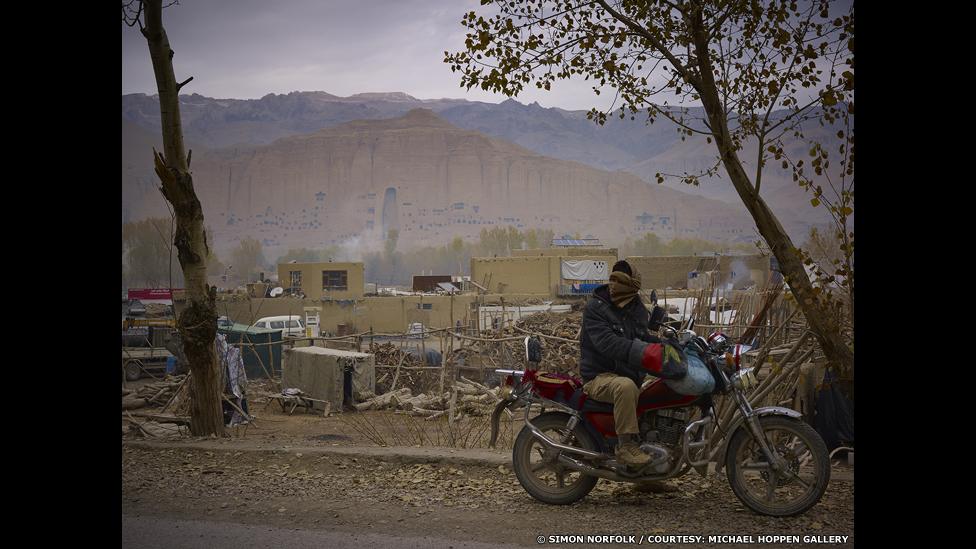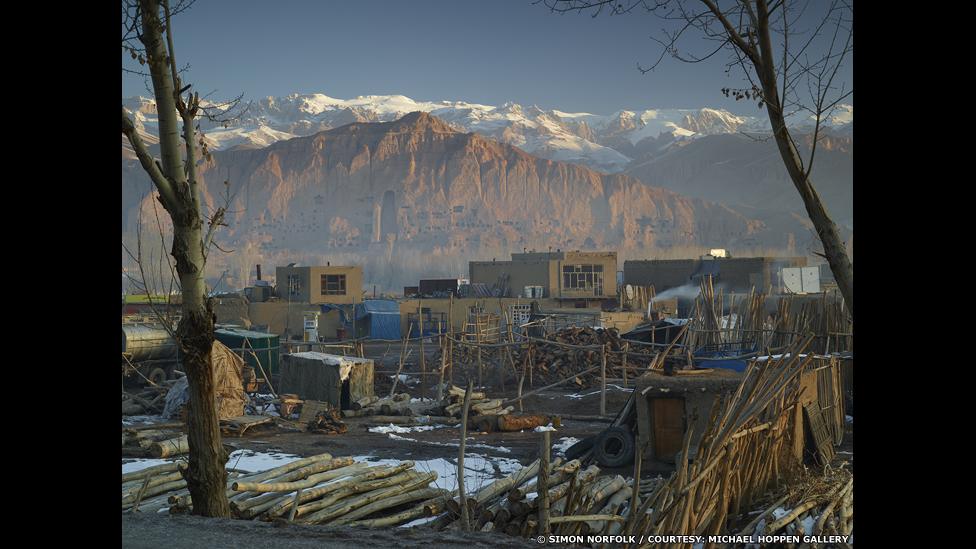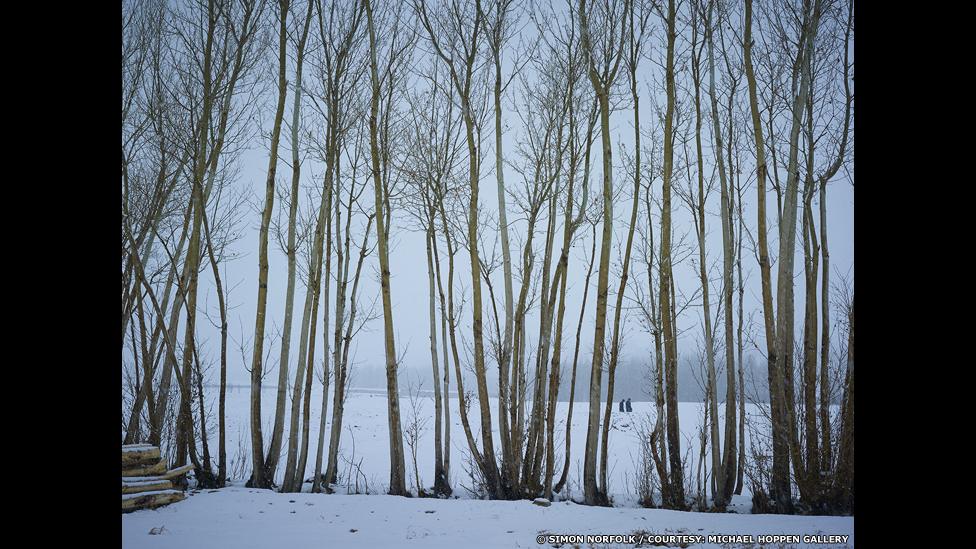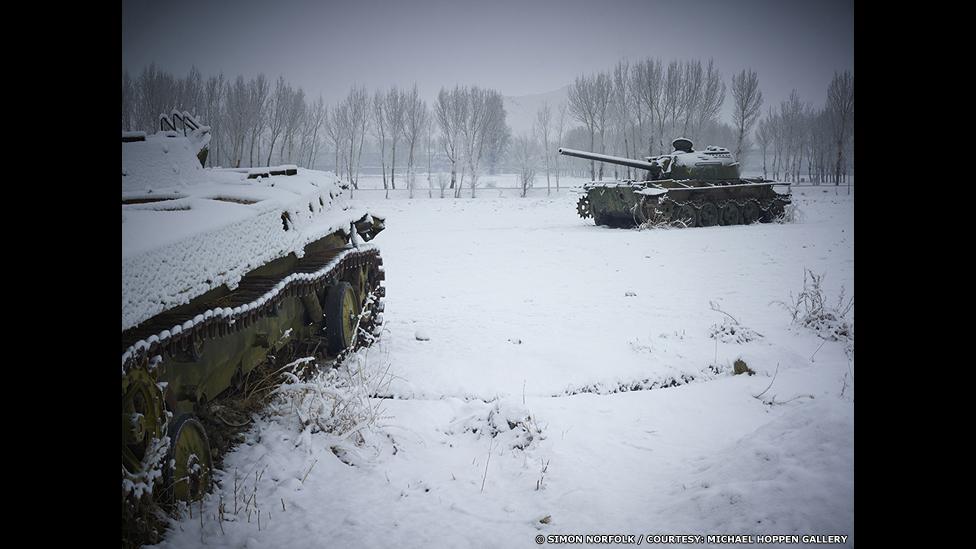In pictures: Bamiyan Valley in Afghanistan
- Published

In 2013 and 2014, photographer Simon Norfolk visited the Bamiyan Valley in Afghanistan to document the war-ravaged landscape. (Photo: Time Taken 1, Early Autumn, 2013-14)

The sandstone cliffs of Bamiyan are most famous for the giant 6th Century Buddha statues carved out of the rock that were destroyed by the Taliban in 2001, leaving the recesses where they stood. (Photo: Time Taken 1, Late Winter, 2013-14)

Norfolk set up his camera at more than a dozen locations, revisiting the same spots over a 12-month period to record the transforming effect of the changing seasons. (Photo: Time Taken 6, Late Spring, 2013-14)

Fields are ploughed and planted, leaves wither and snowfall blankets the scenery. "It intrigues me that the camera can appraise these landscapes with a year-long, unblinking honesty that we humans are in too much of a hurry to perceive," says Norfolk. (Photo: Time Taken 6, Mid-Winter, 2013-14)

"What I'm really offering you here is not this picture on the left and that subtly altered picture on the right, but rather something totally spectral and user-generated: the best part is the gap in between these pictures." (Photo: Time Taken 2, High Summer, 2013-14)

Time Taken runs from 3 August to 8 September at the Michael Hoppen Gallery, London. All photos: © Simon Norfolk. Courtesy Michael Hoppen Gallery. (Photo: Time Taken 2, Mid-Winter, 2013-14)